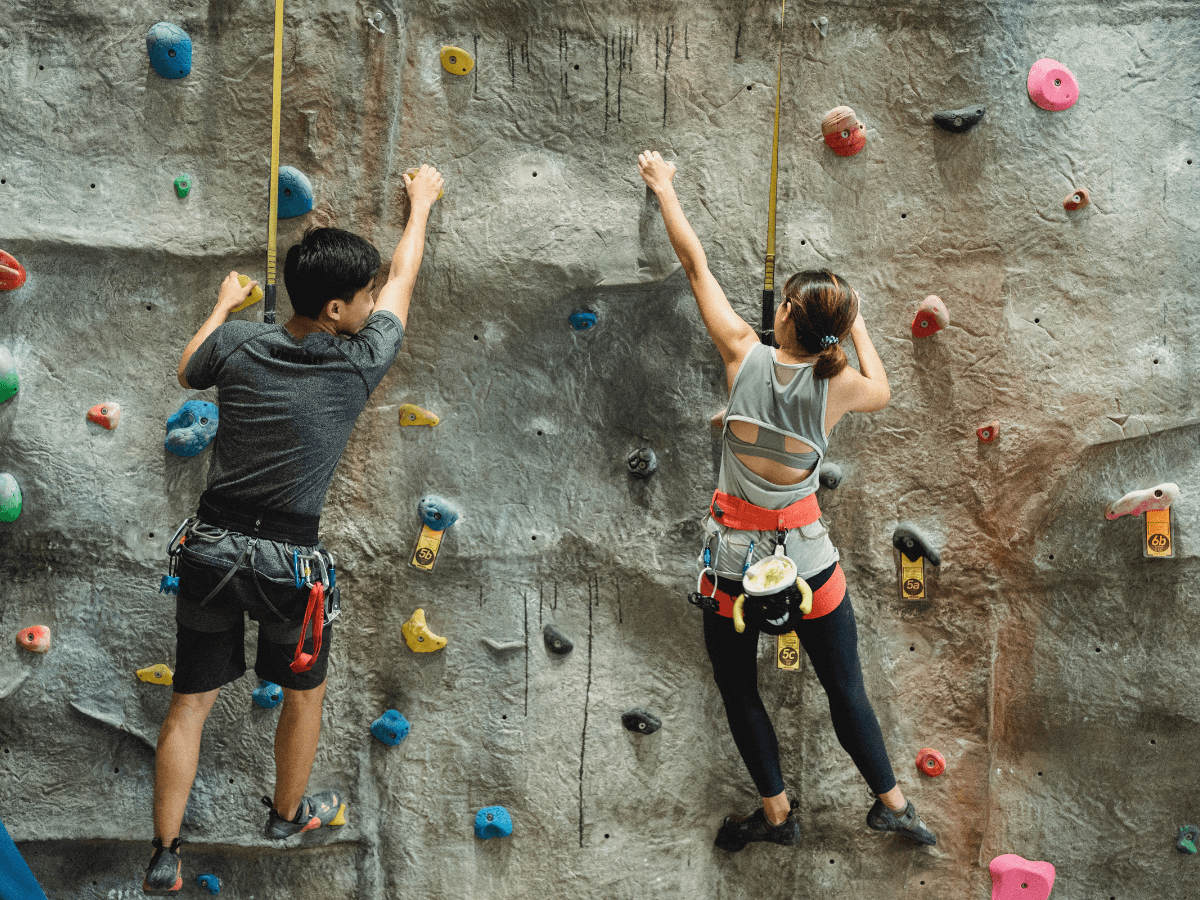The Role of Communication in Rock Climbing Safety
On belay? Belay on. Climbing. Climb on!
Your safety lies in your partner's hands but also yours. Notifying your partner about potential falls, environmental hazards, and general anxiety is an excellent way for your partner to know they need to pay extra attention to you while climbing. Communication isn't the only key to maximizing safety and can help make your climber more comfortable when trying something new.
Below are a few scenarios where communication plays a significant role in rock climbing safety.
"Watch me!": You hear your climber say 40ft up a route they're trying for the first time. The little communication used here tells you, the belayer, everything you need to know. Your climber is entering a difficult section of this route and isn't confident they can complete the moves without falling. In this scenario, you need to pay extra attention and look for any sign your climber is falling to ensure a soft and safe catch. A simple "I'm with you!" back to them is perfect communication to inform them that you are indeed with them and are ready for anything. This can also encourage your climber to try harder because they know you're there with them and will catch them if they fall.
"Clipping!" – "Clipped!": Often used on a route where the climber and belayer can't see each other, such as a route that transitions from overhung to slab. Informing your belayer when you're clipping and clipped is an excellent way to never get short-roped or have too much slack in the system. The belayer in this scenario knows to pay out slack routinely as the climber advances, but once they hear "Clipping!" they know extra slack is needed. Followed by a "Clipped!" from the climber, the belayer knows they can take any extra slack they give to ensure a smaller fall.
"Rock!" – Yes, the dreaded cry every belayer hates to hear. "Rock!" is synonymous with any object falling to the belayer. It's quicker to shout than 'quickdraw' or 'climbing shoe', but all should be taken with the same precaution. As the belayer, you have a few options in this scenario. If the route is overhung, get close to the wall to escape from falling rocks. Suppose you're belaying a climber on a vertical or slab route and are paying attention to your climber as you should. In that case, any sizeable rock should be able to be seen, giving you time to step to the correct side to avoid being struck.
Wearing a helmet is always recommended while climbing and belaying. If it's a windy day and the climber's voice is drowned out by the high speeds swirling around, the belayer might not hear them as well and won't know they need to avoid a potential hazard. Wearing a helmet will minimize the damage to the head caused by any object falling from the air.
"Falling!" – Used by the climber, indicates they are falling! Whether you can see them or not, hearing this flips your brain into overdrive to ensure a proper and safe catch. The climber shouts this for the belayer to prepare themselves for the ensuing fall.
"Climbing!" – Used before the climber takes off the ground and after a fall! Say the climber took a big fall and the belayer isn't in the best position, i.e., squatting down, leaning backward to help hold the slack, sideways and upside-down in a bush. Whatever position they may be in, they're currently holding all the slack for the climber. Once they hear, "Climbing!" they know this slack will give, and they will either fall over or prepare themselves to return to a suitable belaying position. Climbers, please inform your belayer when climbing so they don't fall into bushes when the rope goes loose too quickly.
"Take!" – You need a break! You're just warming up; there is no need to get flash-pumped on the first route of the day. Or maybe just tired! When a climber yells "Take!" the belayer takes in all the slack, putting the climber's weight onto the device, and replies something along the lines of, "Take on!" or, "I got you!" or, "Yup!". Without this acknowledgment, the climber won't know letting go to rest is okay. Tell your climbers that you've got them! Let them rest, now!
Everybody knows that rock climbing is inherently dangerous. To minimize the risk associated with climbing, improve your communication with your partner. Discuss what type of communication you like to receive and uphold your partner's preferences, too. Communication is key in rock climbing safely.

